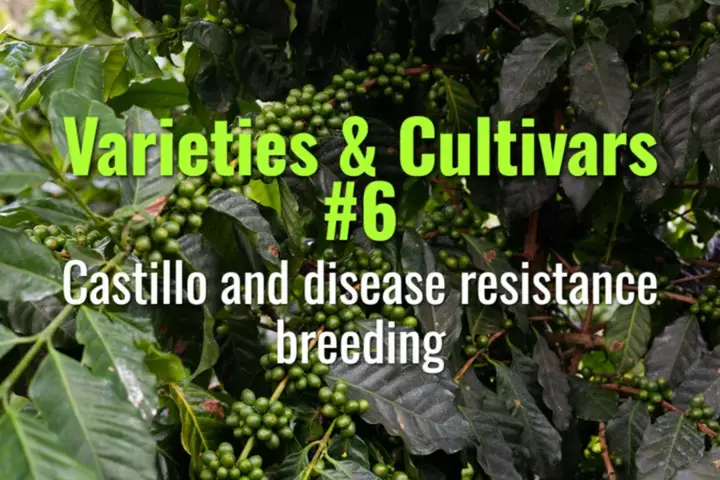Castillo and disease resistance breeding
This topic explains the development of the Castillo variety in Colombia, its role in combating coffee leaf rust, and the broader importance of disease resistance breeding in coffee sustainability.
- Coffee Basics Nerds
- 2 min read
Article 6 of 12 in Varieties & Cultivars/

Background: The Threat of Coffee Leaf Rust
- Coffee leaf rust (Hemileia vastatrix): A fungal disease devastating Arabica crops, causing defoliation and yield loss.
- Colombian crisis (1980s–1990s): Leaf rust outbreaks severely reduced production and farmer income.
- Response: The Colombian Coffee Growers Federation (FNC) and Cenicafé research center initiated breeding programs for resistant varieties.
Castillo Variety
- Origin: Released in 2005 by Cenicafé, named after researcher Jaime Castillo.
- Parentage: Hybrid of Caturra × Timor Hybrid (the latter is a natural Arabica × Robusta cross, carrying rust resistance genes).
- Traits:
- Compact plant, similar to Caturra, suitable for high-density planting.
- Resistant to coffee leaf rust and some other diseases.
- Higher yield potential than traditional Caturra.
- Flavor profile: Initially criticized as inferior, but improved agronomy and processing now achieve good specialty quality.
Disease Resistance Breeding
- Timor Hybrid importance: Provided the genetic basis for resistance, combining Arabica quality with Robusta hardiness.
- Breeding methods: Cross-pollination, selection, and backcrossing to retain desirable traits.
- Goals: Balance disease resistance, yield, and acceptable cup quality.
- Other varieties: Castillo is part of a family including Colombia, Catimor, and Sarchimor lines.
Adoption and Impact
- Colombia: Large-scale adoption—Castillo now covers ~70% of Colombian coffee lands.
- Economic benefits: Reduced fungicide use, stabilized yields, improved farmer resilience.
- Global influence: Inspired other countries to pursue similar resistant hybrids.
Challenges and Criticism
- Cup quality concerns: Some specialty buyers still prefer heirloom varieties like Bourbon or Typica.
- Genetic narrowing: Heavy reliance on one variety may reduce genetic diversity and future resilience.
Lasting Importance
- Castillo represents a landmark success in breeding for resilience, saving Colombia’s coffee sector from rust devastation.
- It highlights the trade-offs between disease resistance, yield, and flavor.
- The variety exemplifies how science, farmer adoption, and global markets interact in shaping the future of coffee cultivation.
You might also like:
- Tags:
- Lasting Importance
- Cup Quality
- Flavor Profile
- Specialty Buyers
- Disease Resistance
- Leaf Rust
- Coffee Leaf
- Arabica Robusta
- Large Scale
- Coffee Cultivation
- Genetic Diversity
- Trade Offs
- Breeding Programs
- High Density
- Cross Pollination
- Future Coffee
- Farmer Income
- Arabica Quality
- Rust Coffee
- Yield Flavor
- Higher Yield